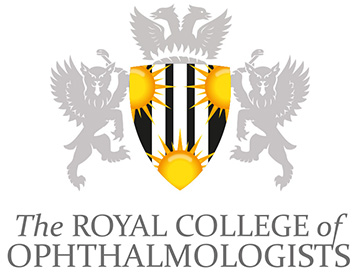Safety Alert: Boron additives in Chloramphenicol drops; should ophthalmologists be concerned?
22 April 2021
The RCOphth supports the delivery of good quality and safe ophthalmic services across the UK.
It is essential that ophthalmic services are able to provide good outcomes for patients through the provision of evidence based healthcare delivery (clinical effectiveness), which minimises harm (patient safety) and which provides the patient with a positive, personal experience of care (patient experience).
The College promotes quality and safety in all aspects of ophthalmology and has developed ophthalmic safety alerts based upon the changing aspects of eye care delivery. These alerts are designed to inform members to improve the quality and safety of services they provide and are based upon:
- changes to drug safety
- updated licencing of therapeutics
- and adverse incidents.
Read other safety alerts here.
Background to the Boron additives in Chloramphenicol drops safety alert
Boron is an essential trace element in plants, and probably also in humans. Elemental boron is not found in nature, but borates occur widely in sediments and plant-based foodstuffs. Boric acid and disodium tetraborate are also used as excipients in a number of medicines for their antimicrobial and buffering properties. Toxicity studies in rats identified that testicular toxicity leading to reduced fertility occurs at doses below that which result in damage to other organs. As a result, the European Medicines Agency (EMA) has recommended upper limits on the daily exposure to boron-containing excipients, expressed as equivalent doses of elemental boron. For children under 2 years, the limit is 1mg per day and for children aged 2-12 years, the limit is 3mg per day. (Reference: EMA/CHMP 619104/2013).
In response to an Annex to the European Commission guideline on ‘Excipients in the labelling and package leaflet of medicinal products for human use’ (Reference: EMA/CHMP/302620/2017), manufacturers have updated product information to include specific warnings possible effects of boron-containing excipients on fertility.
One ophthalmic medicine which contains boric acid as an excipient is chloramphenicol eyedrops (though not chloramphenicol eye ointment).
Many manufacturers have added the following contraindication to their products (though not all have yet done so):
Paediatric population
‘This medicinal product must not be given to a child less than 2 years old as it contains boron and may impair fertility in the future.’
Points to consider
- Chloramphenicol eye preparations have been widely used in children of all ages for many years with no documented adverse effects on fertility. To our knowledge there is no new scientific data from human studies to support this change to the product license.
- There are circumstances where chloramphenicol eye drops are required in preference to eye ointment and no suitable alternative product exists. Other antibiotic eye drops may also contain boron e.g. gentamicin. Commonly available non-boron containing products suitable for young children, such as fusidic acid and azithromycin, have a much narrower spectrum of activity compared to chloramphenicol, and may not be a suitable replacement in some cases. Use of quinolone or broad-spectrum cephalosporin drops (some of which contain no boron) should be reserved for severe eye infections such as keratitis and endophthalmitis to maintain their effectiveness and not used routinely for simple bacterial conjunctivitis.
- Most manufacturers do not list boron content for their products but those that do give a range of 1.1mg/ml-2.9mg/ml. Given that the maximum volume that can be accommodated in the conjunctival sac is between 10-20µL, a typical regime of one drop to either eye four times daily would result in a daily exposure well below 1mg/day, even if 100% absorption is assumed.
- It is unlikely that formulations of boron-containing eye drops will be changed to remove boron in the near future.
- Antibiotic stewardship remains of primary importance to the College. There is a risk that avoiding all use of antibiotic eyedrops with boron-containing excipients in children will result in increased prescribing of second or third-line antibiotics and encourage the development of microbial resistance.
Summary of the Boron additives in Chloramphenicol drops safety alert
All prescribing decisions involve an equation of benefit versus risk. Chloramphenicol has been an effective and well-tolerated antibiotic in ophthalmological practice for nearly 70 years. Whilst a theoretical risk to future fertility from boron-containing excipients in chloramphenicol eyedrops should not be dismissed lightly, a decision to stop using chloramphenicol eyedrops in children also carries risks for the reasons given above.
Although more data on the concentration of borates in individual formulations of chloramphenicol are required, currently available data suggest that the recommended maximum daily dose of boron is unlikely to be exceeded with conventional eyedrop regimes, even for children under the age of two. At the present time, the College believes that the benefits of chloramphenicol eyedrops in paediatric ophthalmic practice for appropriate indications and with courses of appropriate duration outweigh the possible risks posed by boron ingestion.
The RCOphth is seeking to work with the MHRA and the DHSC Senior Pharmacist Medicine Supply Team on this issue to ensure the advice given by all national bodies and suppliers is proportionate and supports clinical requirements.
From Colin Vize and Priya Boparai on behalf of the RCOphth Quality and Safety group (April 2021)
We encourage you to share this information with relevant colleagues.
If you have any queries regarding this alert please contact Jonathan Baker, Quality Improvement Manager, at jonathan.baker@rcophth.ac.uk
